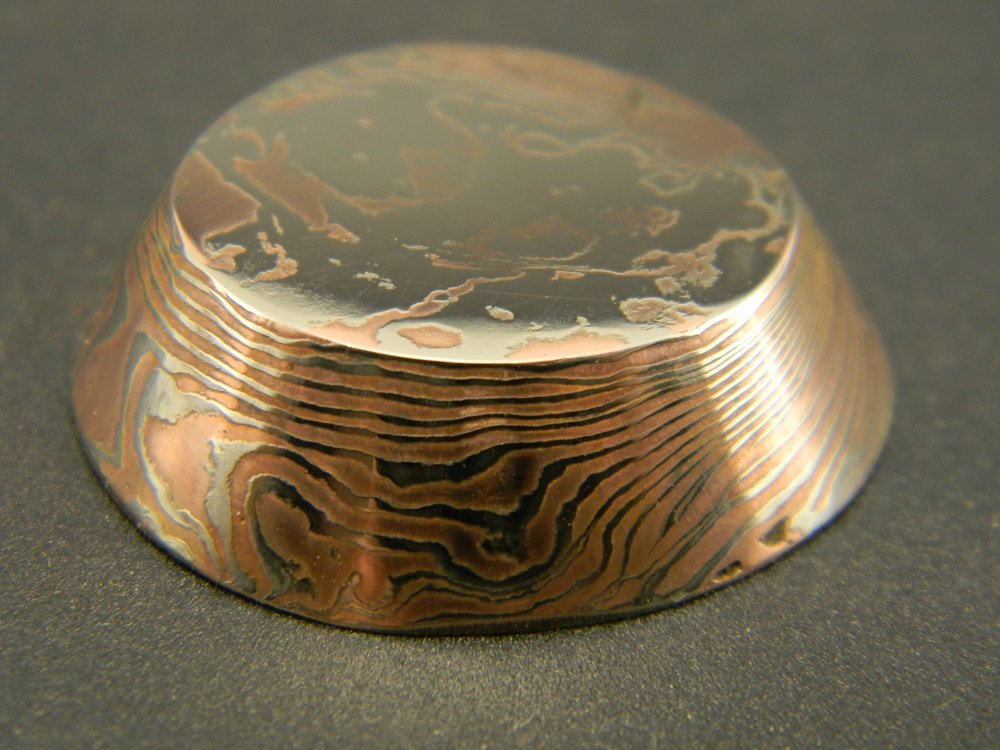Bert2368
Senior Member
- Joined
- Nov 29, 2018
- Messages
- 1,309
- Reaction score
- 1,542
So, I went looking via Google for "bronze" in "knife handles".
And I found THESE.

On the plus side: Hey, it IS a good look for grey/dark/patinad steel and dark wood, much as I had imagined.
On the minus: Damnit, now I'm not so sure I want to make."D" cross section Wa type handles anymore! Im'a gonna need me some bigger handle blanks.
(Edit)
If you own one of these? And love it???
Could you, pretty please, take a couple of photos of such a handle on a grid background (like the one I use for virtually all my knife pics) at as close to 90 degrees as you can, one of left or right profile and another of top or bottom view?

Looking at some stuffs I already have on hand- Top to bottom: North American wild cherry, sugar maple, "Santos" mahogany, Ironwood (not definite on species, but I THINK it is "Argentine lignum vitae"). All are just sanded and then buffed with some beeswax on lathe.
I really like the color of the ironwood for carbon steel. There is a chunk of it off of ebay headed my way. And I THINK I have a big old red brass (BRONZE) valve body in the metal recycle bin, maybe big enough to cut a ferule out of.
And I found THESE.

On the plus side: Hey, it IS a good look for grey/dark/patinad steel and dark wood, much as I had imagined.
On the minus: Damnit, now I'm not so sure I want to make."D" cross section Wa type handles anymore! Im'a gonna need me some bigger handle blanks.
(Edit)
If you own one of these? And love it???
Could you, pretty please, take a couple of photos of such a handle on a grid background (like the one I use for virtually all my knife pics) at as close to 90 degrees as you can, one of left or right profile and another of top or bottom view?

Looking at some stuffs I already have on hand- Top to bottom: North American wild cherry, sugar maple, "Santos" mahogany, Ironwood (not definite on species, but I THINK it is "Argentine lignum vitae"). All are just sanded and then buffed with some beeswax on lathe.
I really like the color of the ironwood for carbon steel. There is a chunk of it off of ebay headed my way. And I THINK I have a big old red brass (BRONZE) valve body in the metal recycle bin, maybe big enough to cut a ferule out of.
Last edited:



















